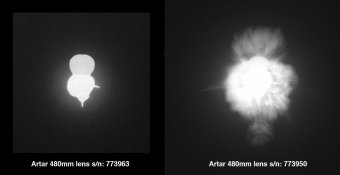vceinc01
Member
- Joined
- Mar 31, 2011
- Messages
- 15
- Format
- 35mm
Is it possible that Artar Lenses with serial numbers in the range of 773000 - 774000 (circa 1957) could have had quartz integrated into them, giving them the ability to focus in the UV spectrum? My understanding is that a lens manufactured with quartz is the only way that an image in the low (350nm - 250nm) ultraviolet range can focus.



